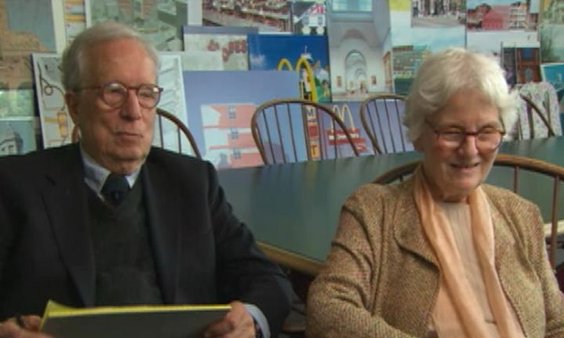NEXT STORY

Palmer Drive Life Sciences Complex
RELATED STORIES

NEXT STORY

Palmer Drive Life Sciences Complex
RELATED STORIES


|
Views | Duration | |
|---|---|---|---|
| 71. Learning from lofts | 56 | 03:40 | |
| 72. History of Philadelphia and its architecture (Part 1) | 59 | 05:56 | |
| 73. History of Philadelphia and its architecture (Part 2) | 36 | 07:09 | |
| 74. Downtown Memphis, Tennessee | 140 | 04:47 | |
| 75. Campus planning for Dartmouth College | 49 | 03:01 | |
| 76. How sections could have helped New Orleans | 27 | 01:13 | |
| 77. Palmer Drive Life Sciences Complex | 32 | 03:49 | |
| 78. Tsinghua University in Beijing (Part 1) | 53 | 04:14 | |
| 79. Tsinghua University in Beijing (Part 2) | 53 | 06:08 | |
| 80. Lecturing | 43 | 06:58 |


[DSB] In New Orleans they… they built a city where a city economically needed to be and they had flood plains which they allowed to be used, and they built levees. And they had levees at a certain height. That will stop the water. Well, if planners had actually drawn the section of what they had done and looked at the possibilities, they would have said, ‘Look what could happen’. Now, people did warn that it could happen, but it wasn’t graphic to anyone and I doubt whether it was thought of even a few times by, you know, the kind of people who do development there. Now, you let the poor go live in the flood plain. You find that all over the world, poor people live in the flood plains, it’s dreadful that. Now they have ownership in flood plains and they can’t see that they were oppressed in the first place. And they say, ‘We don’t want to hear about that, you’re not telling the rich people in the flood plain they’re oppressed’. You’ve got other means of dealing with that. But if the section had been as prominent as the plans in thinking of that city, I think, there could have been more public support for much greater care about the levees, when they were built.
Internationally renowned architects Robert Venturi (1925-2018) and Denise Scott Brown (b.1931) have helped transform contemporary design through their innovative architecture and planning. Winners of numerous prestigious awards, their designs have championed multiculturalism, social activism, symbolism, pop culture, history and evolving technologies.
Title: How sections could have helped New Orleans
Listeners: Thomas Hughes
Thomas Hughes is Mellon Professor Emeritus of the History of Science at the University of Pennsylvania and Distinguished Visiting Professor at the Massachusetts Institute of Technology. His most recent books include Human Built World, Rescuing Prometheus and American Genesis. He is a member of the American Philosophical Society, US National Academy of Engineering, Royal Swedish Academy of Engineering Sciences and the American Academy of Arts and Sciences.
Duration: 1 minute, 13 seconds
Date story recorded: 22nd to 23rd September 2006
Date story went live: 27 May 2010